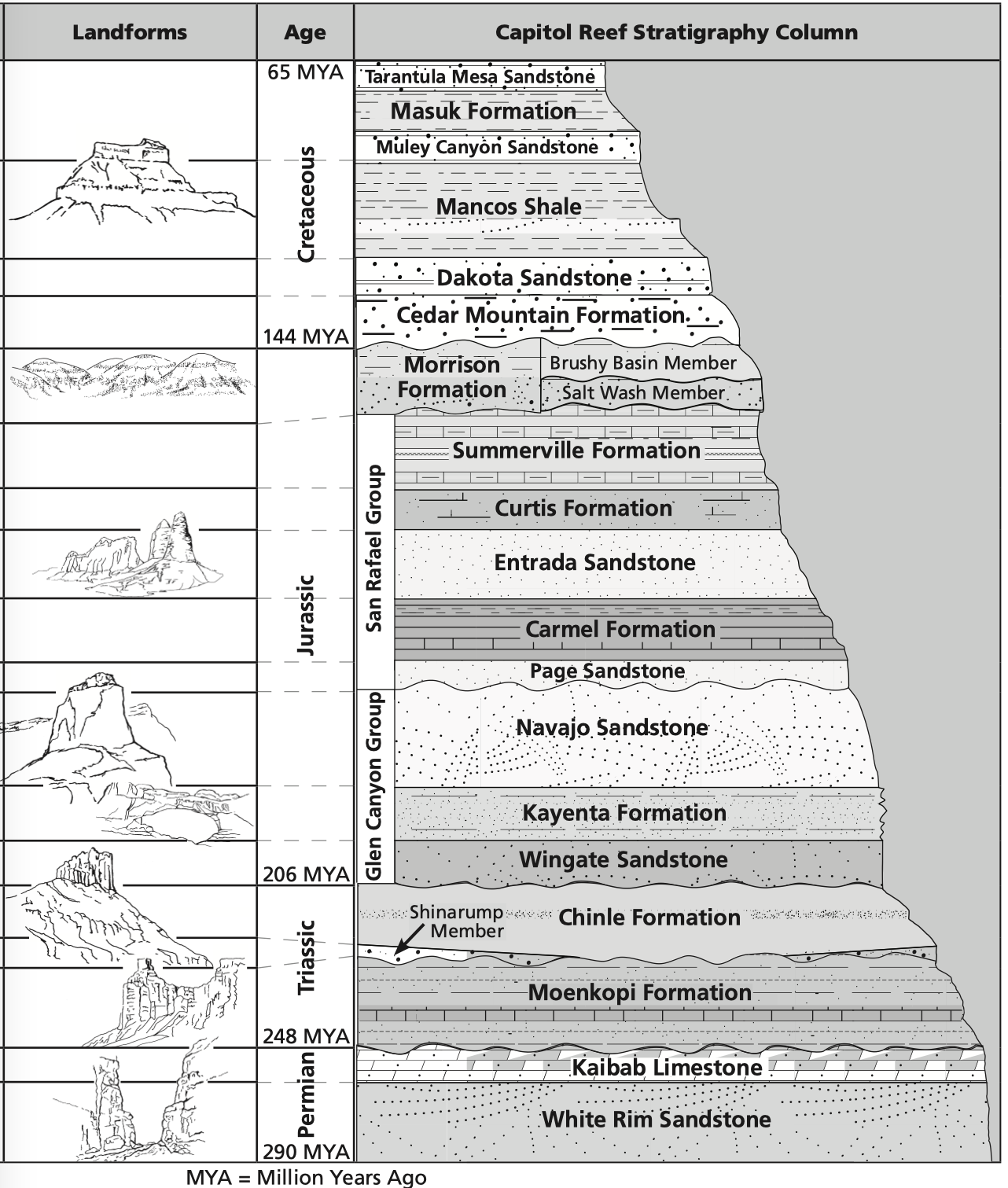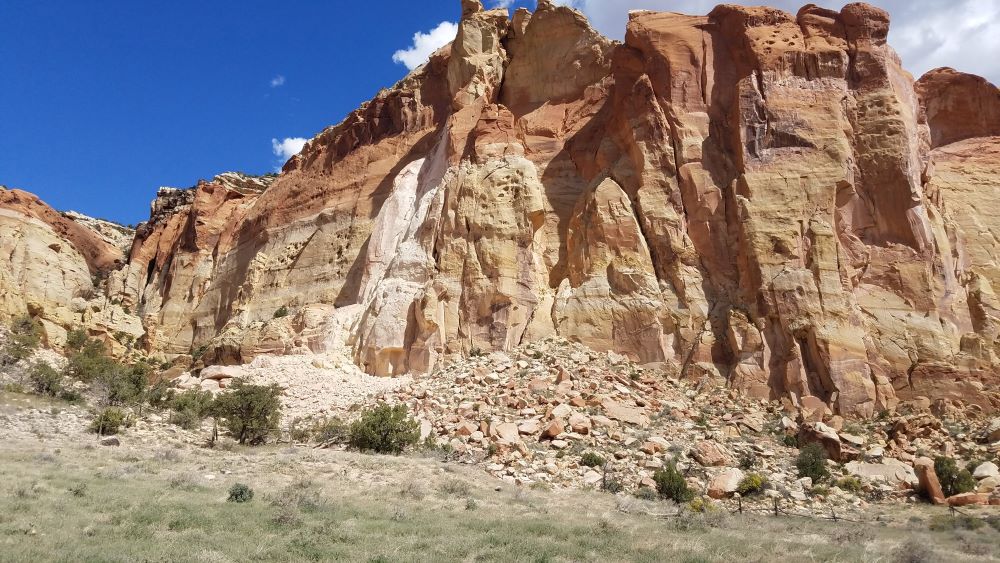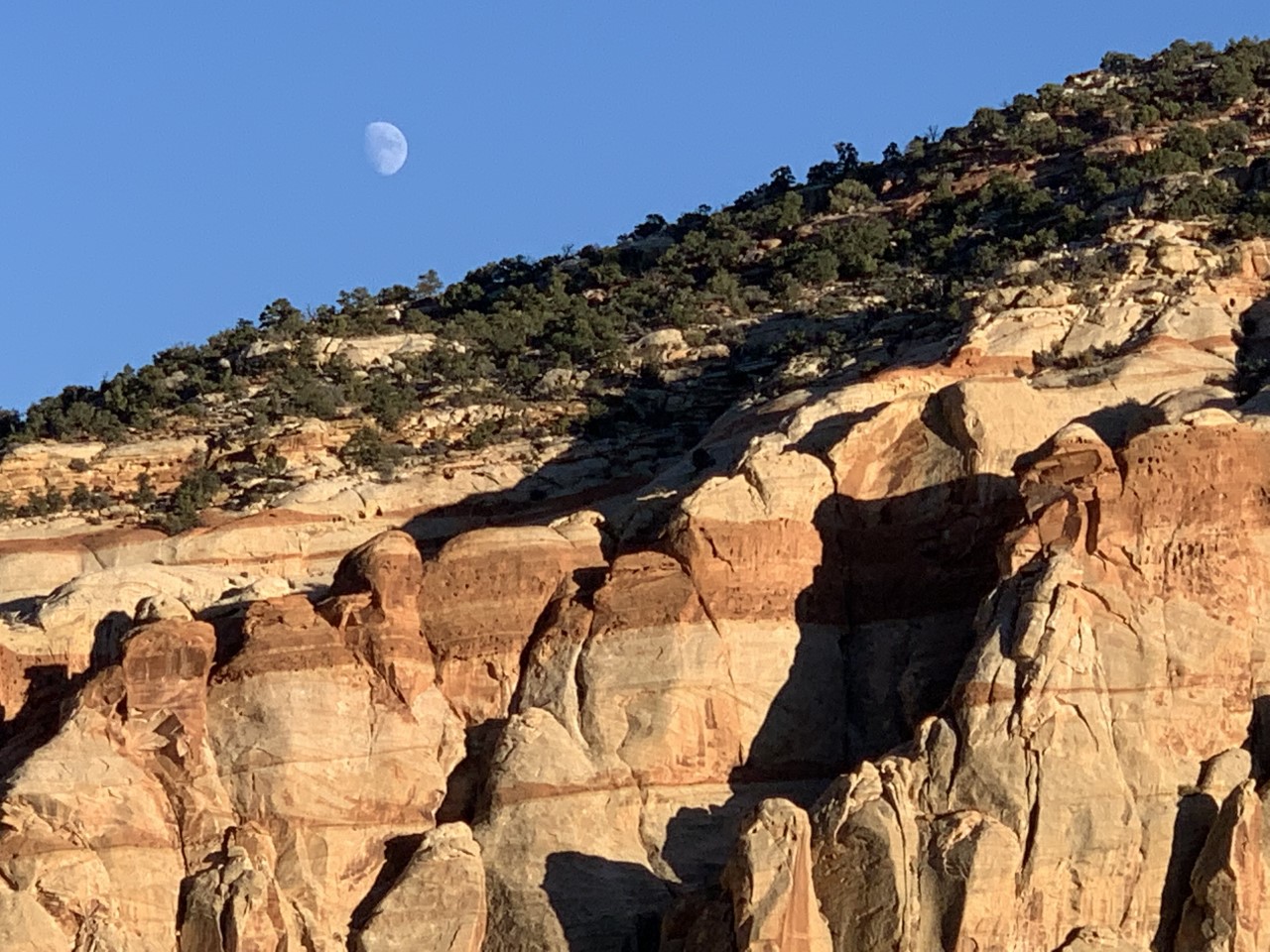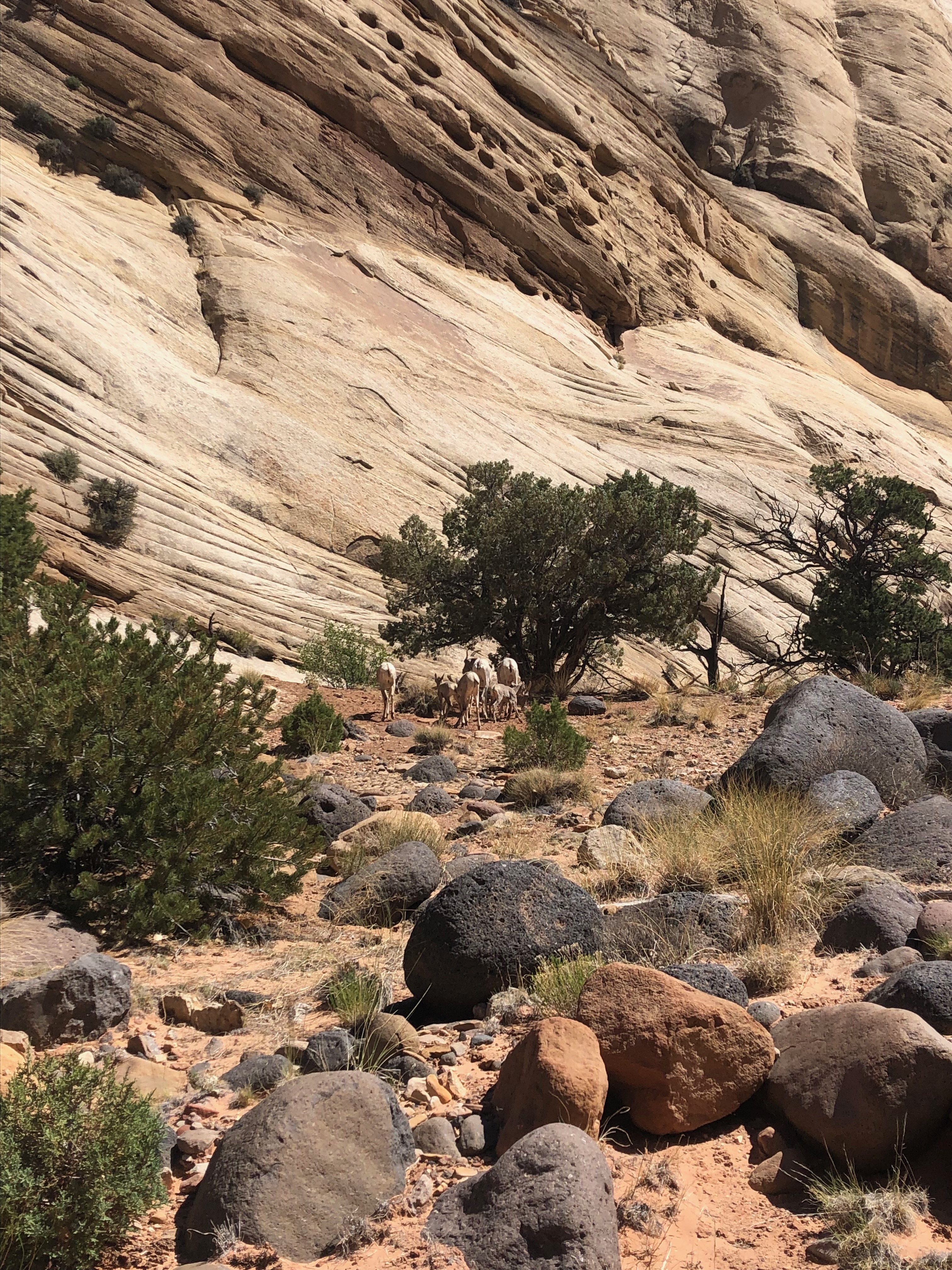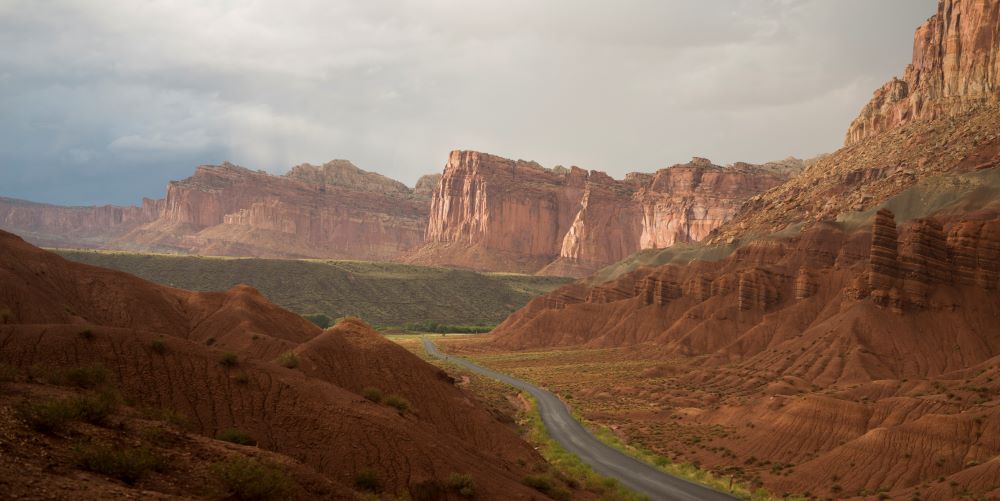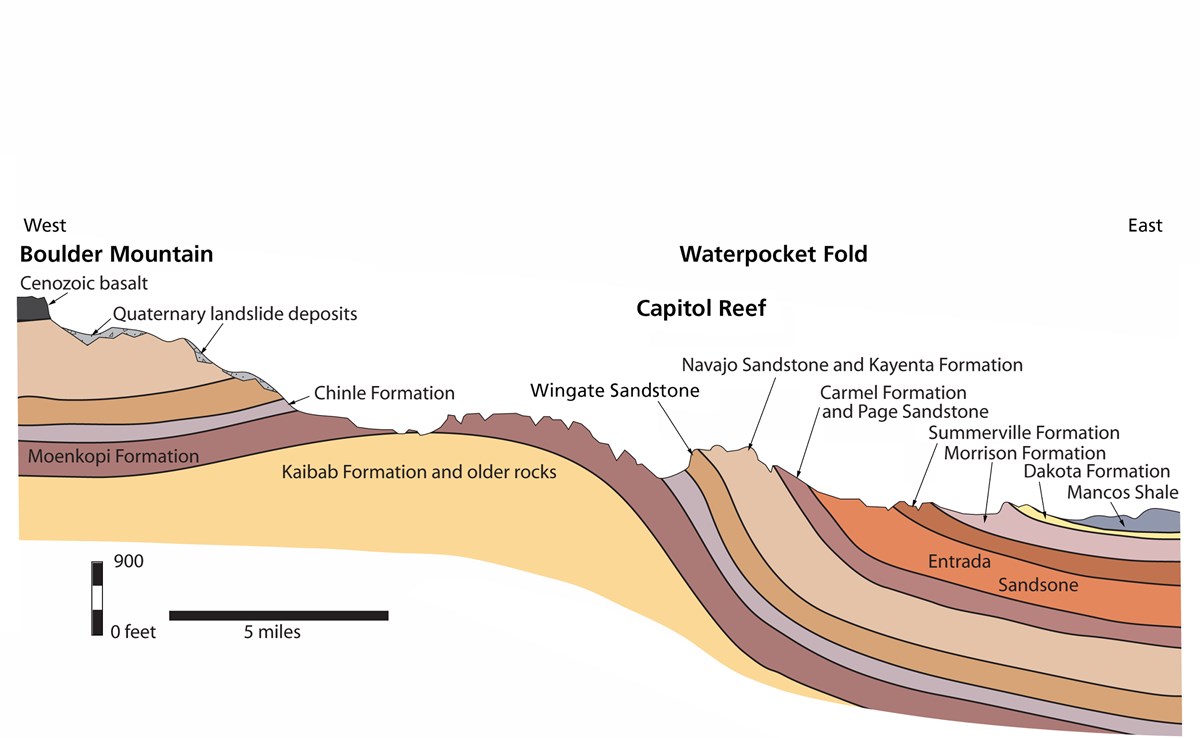Deposition
Rock layers are an indication of ancient environments, and the characteristics of rock layers (texture, color, etc.) reveal old environments at the time the rock layers were preserved in stone. Sandstone layers are ancient sand dunes; braided rivers, swamps, and even oceans are visible as different rock layers. Not all ancient environments are preserved in stone. Sometimes there are “unconformities,” or gaps in geologic time, where layers are missing. Some layers appear in other locations, but other times, that gap is unfilled, and that layer is not visible anywhere.
When studying geology and looking at rock layers, the oldest rocks are at the bottom, and the youngest rocks are at the top. This is called the principle of superposition. You can think about it like a stack of pancakes: the oldest, or first pancakes off the griddle, end up at the bottom of the pancake pile. The same is true with rock layers. Old pancakes, and old rocks are at the bottom, whereas new pancakes, and new rocks (though they may still be pretty old) are at the top.
A stratigraphy column is an illustration of the rock layers.


